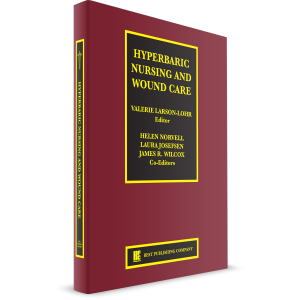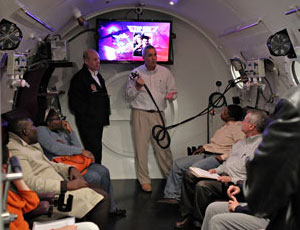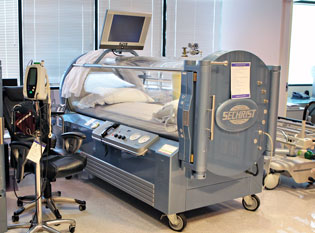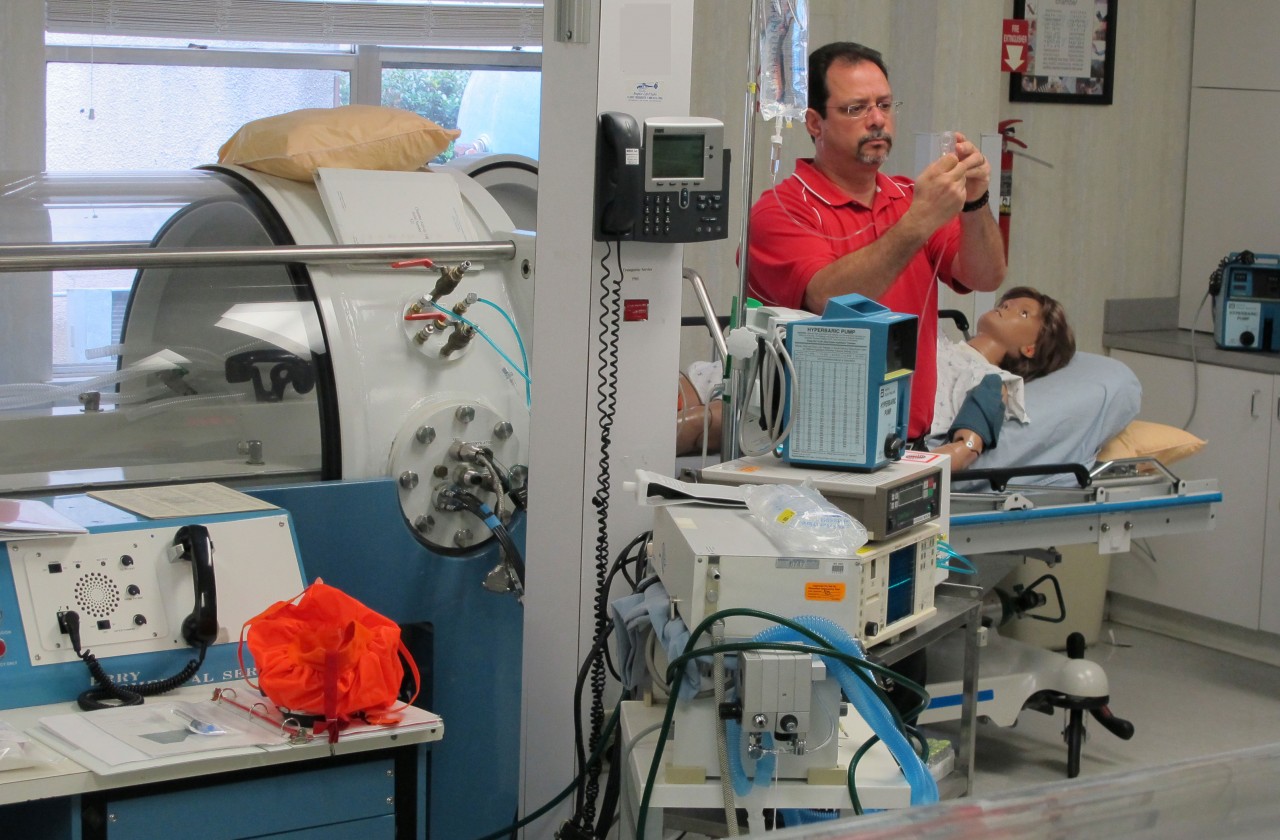Rx Pad
Cardiovascular Issues and Management of the Critically Ill Patient in a Hyperbaric Setting: Nursing Considerations and Preventions, as described by Julio R. Garcia, RN
The cardiovascular assessment of a critical care patient receiving hyperbaric oxygen therapy is similar to any cardiovascular assessment of a critical care patient. Cardiac rhythm should be assessed and monitored during the treatment. If the patient would experience a cardiac emergency during HBO treatment, the staff should be trained to handle such an emergency. It is important to remember that a patient at depth is well oxygenated and will remain so for 5 to 8 minutes. The safest way to bring a patient that has had a cardiac arrest to the surface is to bring them up at 5 psig (fastest rate on a monoplace chamber), while the staff prepares to deliver emergency care. Performing a rapid ascent using the emergency ascent button on monoplace chambers places the person at grave risk for air embolism due to expansion injuries. Once the patient has surfaced, move them to the point farthest away from the open chamber, remove the hyperoxygenated clothing, and if appropriate, defibrillate. Cold oxygen will fall to the floor and dissipate in 30 seconds, so do not place the area at an increased fire risk with the use of a defibrillator. The staff needs to be able to respond quickly and appropriately to such an emergency, so it is our recommendation that the staff be Advanced Cardiac Life Support (ACLS) certified.
A wide range of intravenous therapy can be managed during HBO treatments. Blood products, vasoactive drugs, parental feedings, antibiotics, and simple crystalloids can be administered. Enteral feedings may also be administered if the feeding tube, such as the Miller-Frederick Feeding Tube, is placed in the small bowel. Gastric feeding during HBO therapy should be avoided. Vasoactive drugs can be safely managed and delivered to the patient through specially design infusion pumps. There are currently two pumps that are designed to be used with a monoplace chamber and are capable of pumping against increased atmospheric pressure. The two pumps are the IVAC 530 (IVAC Corp., San Diego, CA) and the Abbott Hyperbaric Pump (Abbott Laboratories, North Chicago, IL). Both pumps will have inaccuracies at very low and high infusion rates, particularly if they are pumping against greater than 2.0 atmospheres absolute. Adjustments will need to be made to the drug infusion rate by the nurse to hold the blood pressure or cardiac function stable during the HBO treatment. If a vasoactive drug is being administered, cardiac rhythm as well as blood pressure should be monitored throughout the treatment. Overall, the blood pressure should be stable if supported by vasoactive medications before the patient is placed in the chamber. The blood pressure may fluctuate if on a support medication during compression and decompression. Before an adjustment is made in the medication during compression and decompression, it is recommended to observe the blood pressure for a brief period to determine if it will go back to an acceptable range once movement through pressure is complete.
Reference: Larson-Lohr V, Norvell H, Josefsen L, Wilcox J et al. Hyperbaric Nursing and Wound Care. Flagstaff, AZ: Best Publishing Company; 2010.
About the Author:
Julio R. Garcia, CHT, RN, BSN, ACHRN, AAPWCA is the Director for the Center for Wound Care and Hyperbaric Medicine at the Springhill Medical Center in Mobile, Alabama. He was trained in Hyperbaric Medicine and Medical Technology at Virginia Mason MC in Seattle, Washington. Garcia served in the US Army as a Combat Medical Specialist and conducted Air Medivac Operations SWA in Operation Desert Sheild/Storm. He is co-author of Hyperbaric Nursing and Wound Care and has been faculty with Wound Care Education Partners since our beginning.
LEARN MORE ABOUT HYPERBARIC MEDICINE
 |
Hyperbaric Nursing and Wound Care |
 |
Introduction to Hyperbaric Medicine 40.0 hour credit course, live course |
 |
Hyperbaric Oxygen Therapy Updates (6.75 online credit course) Fundamental Theories and Primary Practices in Hyperbaric Medicine (28.75 online credit course) |
When you subscribe to the blog, we will send you an e-mail when there are new updates on the site so you wouldn't miss them.



Comments